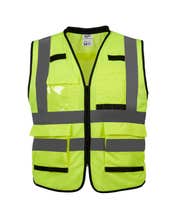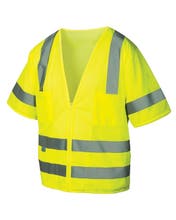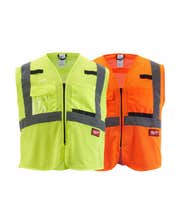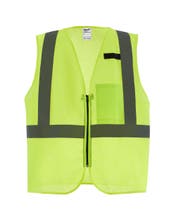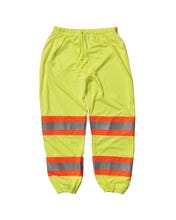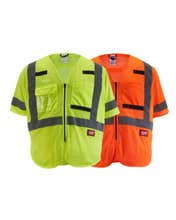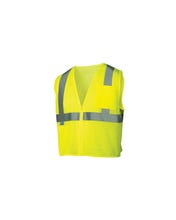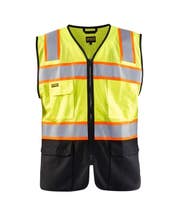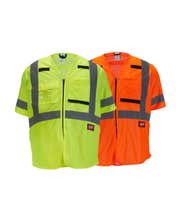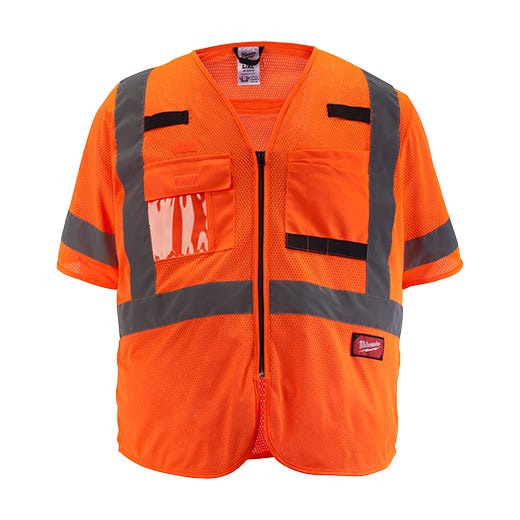Safety Vests High Viz
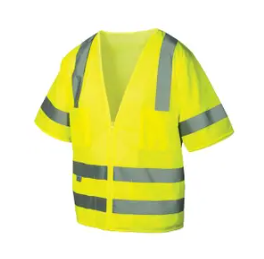
Filters >>
Narrow it Down!
Filters >>
Narrow it Down!
-
Milwaukee ANSI/CSA Class 2 Surveyor's 27 Pocket Safety Vest 48-73-5161-OPTBackorder This item is currently on order and have been notified it will take to receive than normal. Placing an order will secure your place in line and we would typically anticipate 5-15+ days delay for Back Ordered items to get fulfilled but longer waits certainly happen all the time on popular items. Please do not hesitate to call our sales team with questions or stock status.SKU: 48-73-5161-OPTAs low as$6029
-
Milwaukee Class 2 High Visibility 10 Pocket ANSI Safety Vest 48-73-5021-OPTBackorder This item is currently on order and have been notified it will take to receive than normal. Placing an order will secure your place in line and we would typically anticipate 5-15+ days delay for Back Ordered items to get fulfilled but longer waits certainly happen all the time on popular items. Please do not hesitate to call our sales team with questions or stock status.SKU: 48-73-5021-OPTAs low as$1997
-
Milwaukee ANSI Class 2 15 Pocket Performance Safety Vest 48-73-5041-OPTBackorder This item is currently on order and have been notified it will take to receive than normal. Placing an order will secure your place in line and we would typically anticipate 5-15+ days delay for Back Ordered items to get fulfilled but longer waits certainly happen all the time on popular items. Please do not hesitate to call our sales team with questions or stock status.SKU: 48-73-5041-OPTAs low as$3689
-
Pyramex Class 3 Safety Vest Mesh 5 Pocket ZipperSelect Size Multiple sizes available. Must select size to add item to the cart!SKU: PYRRVZ3110-OPTAs low as$859
-
Milwaukee Non-Breakaway Class 2 Mesh Safety Vest 48-73-5111-OPTBackorder This item is currently on order and have been notified it will take to receive than normal. Placing an order will secure your place in line and we would typically anticipate 5-15+ days delay for Back Ordered items to get fulfilled but longer waits certainly happen all the time on popular items. Please do not hesitate to call our sales team with questions or stock status.SKU: 48-73-5111-OPTAs low as$1497
-
Milwaukee ANSI/CSA Class 2 15 Pocket Performance Safety Vest 48-73-5081-OPTBackorder This item is currently on order and have been notified it will take to receive than normal. Placing an order will secure your place in line and we would typically anticipate 5-15+ days delay for Back Ordered items to get fulfilled but longer waits certainly happen all the time on popular items. Please do not hesitate to call our sales team with questions or stock status.SKU: 48-73-5081-OPTAs low as$3997
-
Milwaukee Class 2 High Visibility Mesh One Pocket CSA Safety Vest 48-73-2251-OPTBackorder This item is currently on order and have been notified it will take to receive than normal. Placing an order will secure your place in line and we would typically anticipate 5-15+ days delay for Back Ordered items to get fulfilled but longer waits certainly happen all the time on popular items. Please do not hesitate to call our sales team with questions or stock status.SKU: 48-73-2251-OPTAs low as$999
-
Milwaukee ANSI/CSA Class 2 10 Pocket Mesh Safety Vest 48-73-5061-OPTBackorder This item is currently on order and have been notified it will take to receive than normal. Placing an order will secure your place in line and we would typically anticipate 5-15+ days delay for Back Ordered items to get fulfilled but longer waits certainly happen all the time on popular items. Please do not hesitate to call our sales team with questions or stock status.SKU: 48-73-5061-OPTAs low as$1997
-
PIP Safety ANSI 107 Class E Mesh PantSelect Size Multiple sizes available. Must select size to add item to the cart!SKU: PIP319-MTPLY-OPTAs low as$1569
-
Pyramex RVZ24 Series Type R - Class 2 Safety Vest w/ Clear PocketSelect Size Multiple sizes available. Must select size to add item to the cart!SKU: PYRRVZ2410CP-OPTAs low as$653
-
Milwaukee ANSI Class 3 Mesh Safety Vest 48-73-5131-OPTBackorder This item is currently on order and have been notified it will take to receive than normal. Placing an order will secure your place in line and we would typically anticipate 5-15+ days delay for Back Ordered items to get fulfilled but longer waits certainly happen all the time on popular items. Please do not hesitate to call our sales team with questions or stock status.SKU: 48-73-5131-OPTAs low as$2097
-
Pyramex Class 2 Safety Vest Mesh 2 Pocket ZipperSelect Size Multiple sizes available. Must select size to add item to the cart!SKU: PYRRVZ2110-OPTAs low as$779
-
Pyramex Class 2 Safety Vest Solid 8 Pocket ZipperSelect Size Multiple sizes available. Must select size to add item to the cart!SKU: PYRRVZ2410-OPTAs low as$767
-
Blaklader Kangaroo Class 2 Mesh Utility Work Vest Cargo Pockets 313010543399Select Size Multiple sizes available. Must select size to add item to the cart!SKU: BLA313010543399-OPTAs low as$3495
-
Pyramex Class 3 Safety Vest 8 Pocket ZipperSelect Size Multiple sizes available. Must select size to add item to the cart!SKU: PYRRVZ3410-OPTAs low as$833
-
Milwaukee ANSI Class 3 10 Pocket Safety Vest 48-73-5141-OPTBackorder This item is currently on order and have been notified it will take to receive than normal. Placing an order will secure your place in line and we would typically anticipate 5-15+ days delay for Back Ordered items to get fulfilled but longer waits certainly happen all the time on popular items. Please do not hesitate to call our sales team with questions or stock status.SKU: 48-73-5141-OPTAs low as$2297
-
Milwaukee ANSI Breakaway Class 2 Mesh Safety Vest 48-73-5121-OPTBackorder This item is currently on order and have been notified it will take to receive than normal. Placing an order will secure your place in line and we would typically anticipate 5-15+ days delay for Back Ordered items to get fulfilled but longer waits certainly happen all the time on popular items. Please do not hesitate to call our sales team with questions or stock status.SKU: 48-73-5121-OPTAs low as$1997
-
Pyramex Class 2 Safety Vest 2 Pocket Hook/LoopSelect Size Multiple sizes available. Must select size to add item to the cart!SKU: PYRRCZ2120-OPTAs low as$709
-
PIP ANSI Type R Class 3 (AR) Arc Rated (FR) Flame Resistant Solid VestSelect Size Multiple sizes available. Must select size to add item to the cart!SKU: PIP305-3000-OPTAs low as$6609
-
Milwaukee Class 3 High Visibility Mesh Safety Vest 48-73-513Select Size Multiple sizes available. Must select size to add item to the cart!SKU: 48-73-513-OPTAs low as$2097
-
Pyramex Vest w/ReflectSelect Size Multiple sizes available. Must select size to add item to the cart!SKU: PYRRV1227-OPTAs low as$423
-
Pyramex Class 2 Safety Vest Solid No-Pocket Hook/LoopSelect Size Multiple sizes available. Must select size to add item to the cart!SKU: PYRRVHL2910-OPTAs low as$459
-
Milwaukee Class 2 High Visibility Mesh One Pocket ANSI Safety Vest 48-73-2241-OPTBackorder This item is currently on order and have been notified it will take to receive than normal. Placing an order will secure your place in line and we would typically anticipate 5-15+ days delay for Back Ordered items to get fulfilled but longer waits certainly happen all the time on popular items. Please do not hesitate to call our sales team with questions or stock status.SKU: 48-73-2241-OPTAs low as$999
-
Milwaukee ANSI Breakaway Class 2 Mesh 9 Pocket Safety Vest 48-73-5171-OPTBackorder This item is currently on order and have been notified it will take to receive than normal. Placing an order will secure your place in line and we would typically anticipate 5-15+ days delay for Back Ordered items to get fulfilled but longer waits certainly happen all the time on popular items. Please do not hesitate to call our sales team with questions or stock status.SKU: 48-73-5171-OPTAs low as$1729
-
PIP Safety Water Resistant Class E Value Safety PantsSelect Size Multiple sizes available. Must select size to add item to the cart!SKU: PIP318-1757-YEL-OPTAs low as$1217
-
DriFire Vizable FR Mesh Safety VestSelect Size Multiple sizes available. Must select size to add item to the cart!SKU: NSA-V00HA2V-OPTAs low as$9069
-
PIP Safety Non-ANSI Incident Command VestSelect Size Multiple sizes available. Must select size to add item to the cart!SKU: PIP300-1505-OPTAs low as$999
-
PIP ANSI Type R Class 2 (AR) Arc Rated (FR) Flame Resistant Solid VestSelect Size Multiple sizes available. Must select size to add item to the cart!SKU: PIP305-2000-OPTAs low as$5679
Construction sites are bustling environments with constant movement of vehicles and machinery. For workers, staying visible is paramount to preventing accidents. Here's a breakdown of the different types of safety vests and their corresponding visibility ratings to ensure you choose the right one for staying safe on the job:
ANSI Type Rating: Safety vests are categorized by the American National Standards Institute (ANSI) based on the amount of fluorescent background material and reflective stripes they possess. This classification system, designated by "ANSI Type" followed by a number (1, 2, or 3), determines the vest's visibility level in various working environments.
Types and Applications:
ANSI Type 1: These vests offer the lowest level of visibility and are suitable for low-risk environments with minimal traffic flow (speeds below 25 mph) and good lighting conditions. They typically have minimal reflective tape and a smaller overall surface area of fluorescent fabric. Applications might include parking lot attendants, crossing guards, or landscapers working in controlled areas.
ANSI Type 2: These vests strike a balance between visibility and comfort. They offer a higher level of visibility compared to Type 1 vests and are appropriate for moderate-risk environments with traffic speeds up to 50 mph. They typically feature wider reflective stripes and a larger area of fluorescent background material. Common applications include construction workers on roadways with controlled traffic flow, delivery drivers in low-light conditions, or road maintenance crews.
ANSI Type 3: These vests provide the highest level of visibility and are essential for high-risk environments with fast-moving traffic (speeds exceeding 50 mph) or poor lighting conditions. They boast the most extensive reflective tape coverage and the largest area of fluorescent fabric. Applications include construction workers on highways, airport ground crews, or emergency responders working in low-visibility situations.
Additional Considerations: Beyond the ANSI rating, consider factors like weather conditions. Some vests offer water-resistant or breathable materials for added comfort. High-visibility clothing also comes in various styles, including two-tone vests, jackets with built-in vests, or even cooling vests for hot environments. Always prioritize a good fit – a loose vest can snag on equipment, while a tight one can restrict movement and comfort.
By understanding the different ANSI types and their applications, construction workers in Ohio can choose the most appropriate safety vest to maximize their visibility and ensure they are seen on the jobsite, keeping themselves and others safe.




